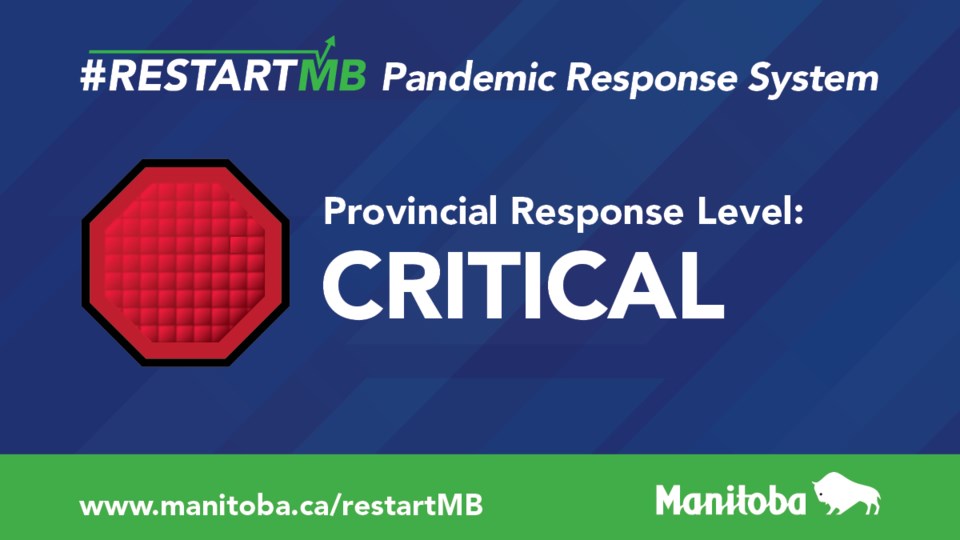Over a year ago, when COVID-19 first arrived in Manitoba, streets were quiet as public health orders saw everyone who could work from home, all schools shift to remote learning only and non-essential businesses restricted from operating. It turns out all to have been for nothing though, it seems, because the dreaded first wave that was anticipated with an abundance of caution never really arrived and worries about what might happen to the health care system if Manitobans didn’t bend the curve were unfounded, at least at that time.
These days, however, the province is shipping intensive care patients to Ontario, elective surgeries are being cancelled once again but even stores selling non-essential items are being allowed to stay open, albeit at 10 per cent capacity for the time being, while restaurants are limited to serving takeout and delivery meals.
If you think that the situation and the response from the two springs and early summers seem a little bit mismatched, you’re probably not the only one.
Manitoba first introduced tougher public health orders to deal with the pandemic’s wave more than four weeks ago, then changed them a little bit in the ensuing weeks before banning all gatherings with people from outside your household prior to the May long weekend. That ban will last until May 29, as orders stood at the time of this writing.
Do the government and public health officials have reasons for having less restrictive orders now than the province had in November, during the height of the second wave, when purchasing non-essential items in stores was prohibited? They probably do, though they don’t always spell out exactly what they are. They say its hard to restrict things much more, but the truth is that restrictions have been harsher in both the earlier waves. Perhaps by this point, they no longer have faith that people will abide by orders they don’t feel like following or they believe that the fact that 60 per cent of Manitoba adults have now received at least one dose of COVID-19 vaccine will help make up the difference. It does, but that isn’t much consolation for the 40 per cent of the province’s adults who haven’t gotten one dose, dozens of whom are currently filling hospital beds in medicine wards and intensive care units in this province’s hospitals.
Until a vaccine was developed, a certain percentage of Manitobans was always going to contract COVID. The idea behind restrictions was never to prevent this from happening, but to spread it out over a long enough period so that they health care system would not be overwhelmed. Unfortunately, by spreading the pandemic out longer, public health orders may have worn out people’s patience when it comes to obeying them. Now, people wonder why parts of the United States have arenas half-full or more for sports games and case numbers are equivalent or even lower despite fewer restrictions. In part, it’s because vaccines have been administered more quickly in the U.S. Another factor is that more people had COVID-19 earlier and may now be naturally immune or that those most susceptible already contracted it. Letting a virus run wild, or at least not controlling it as much as possible, does have the added benefit of seeing the pandemic run its course a little quicker.
It might be galling at this point for northern residents to have to obey these orders when the region’s case numbers aren’t that high. But as many people have repeatedly said throughout this pandemic, we’re all in this together. Nowhere is that more evident than in the case of intensive care beds, all of which are located in either Winnipeg or Brandon. If we flout health orders and allow the situation to get to where it has in Winnipeg, we risk finding out when we get sick that there’s no more room at the intensive care unit.




